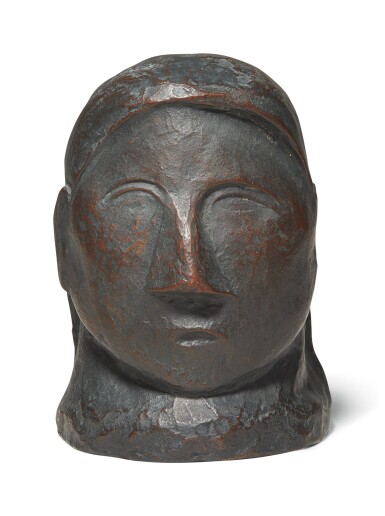Eclectic | New York
Eclectic | New York

Property from the Collection of Luce & Arthur Klein
PABLO PICASSO | TÊTE DE FEMME
Lot Closed
May 1, 04:04 PM GMT
Estimate
70,000 - 90,000 USD
Lot Details
Description
Property from the Collection of Luce & Arthur Klein
PABLO PICASSO
1881 - 1973
TÊTE DE FEMME
inscribed Picasso
bronze
Height: 4¾ in. (12 cm.)
Conceived in 1906-07 and cast in an edition of at least 3.
Claude Picasso has confirmed the authenticity of this work.
Acquired in Paris circa 1970s
Christian Zervos, Pablo Picasso, Oeuvres de 1912 à 1917, vol. II**, Paris 1942, no. 574, illustration of another cast pl. 266
Brassaï & Daniel-Henry Kahnweiler, Les Sculptures de Picasso, Paris 1949, illustration of another cast pl. 3
Werner Spies, Sculpture by Picasso London, 1971, no. 12, illustration of another cast p. 40
Mare-Besnard Bernadec, Michèle Richet & Hélène Seckel, The Picasso Museum, Paris, New York 1986, no. 278, illustration of another cast p. 151
Werner Spies, Picasso: The Sculptures. Catalogue Raisonné of the Sculptures, Stuttgart, 2000, no. 12, illustration of another cast p. 346
This extraordinarily compact, block-like sculpture was conceived in Paris in the winter of 1906-07 and is one of Picasso’s most important early bronzes. The group of works made between the autumn of 1906 and 1909 posed new questions hitherto unknown in European sculpture, putting them on a par with Picasso’s work as a painter and draftsman. Reduced to the essentials, the schematic treatment of the almond-shaped eyes, the smooth surface and the symmetrical features of this piece create the impression of perfect serenity.
“This mask-like object is the sculptural consequence of a radical transition in Picasso’s pictorial and graphic work from a portrait-like conception of the head to a form of expressive stylization” writes Werner Spies. “For the first time, Picasso obtains a sculptural representation in which dependence on received patterns and an interest in autonomous, compositionally abstract formative media counterbalance one another.”
(Werner Spies, Sculpture by Picasso, London, 1971, pp. 21 & 23)
